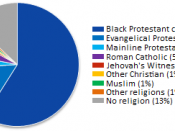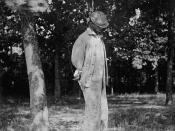The Great Flood of 1927 was one of the worst floods in the United States during the 1900s. It was considered the worst natural disaster to hit the United States before Hurricane Katrina. The flood affected Arkansas, Illinois, Kentucky, Louisiana, Mississippi, and Tennessee. The flood began in central Mississippi because of heavy rains and melting snow occurred in the early spring of 1927. On April 21, 1927 at eight a.m. the Mississippi River levee broke at Mounds Landing, which is twelve miles from Greenville. The river broke through 13 levees along the river which caused widespread flooding that covered over 26,000 square miles. Over 130,000 homes were lost and 700,000 people were homeless. 246 flood-related deaths were reported. Property damage was estimated at 350 million dollars. The flooding occurred from April until June. The disaster caused more than a thousand deaths and forced almost a million people from their homes.
More than five million acres of farmland were ruined.
Many people left Greenville by trains before it was too late to evacuate but others just went to higher ground and waited. Boats arrived to evacuate white women and children, while the Red Cross arrived and set up refugee camps for the African Americans. There were about 330,000 African-Americans who were moved to 154 relief camps. Over 13,000 evacuees near Greenville, Mississippi were gathered from area farms and evacuated to the crest of an unbroken levee which was a five-mile stretch of land, and abandoned there for days without food or clean water.
The head of the Flood Relief Committee, Will Percy, thought that the right thing to do was to evacuate the African American refugees. The plantation owners voted against this because they though that the African Americans would not return after the flood and so refugee camps were set...


